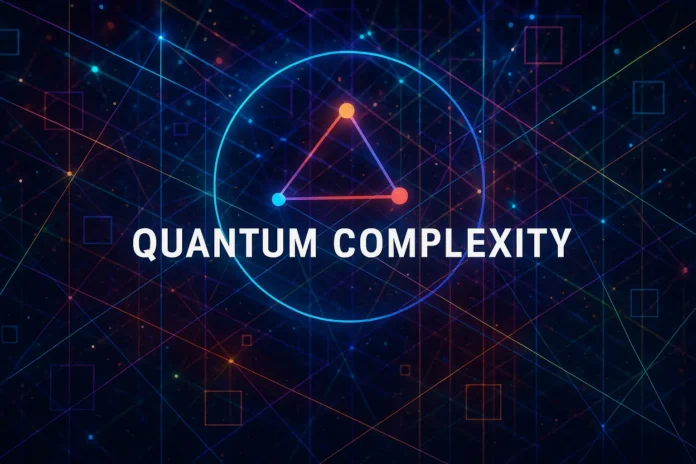Table of Contents
- Introduction
- Classical PCP Theorem: A Quick Recap
- Motivation for Quantum PCPs
- What Are Probabilistically Checkable Quantum Proofs?
- Quantum PCP Conjecture
- Quantum Locally Checkable Proofs
- Complexity Classes: QMA and QPCP
- The QPCP Theorem (Conjectured)
- Quantum vs Classical Proof Verification
- Quantum Low-Degree Testing
- Quantum Error-Correcting Codes and PCPs
- Stabilizer Codes and Local Hamiltonians
- Gap Amplification in Quantum Systems
- Hardness of Approximating Local Hamiltonian Problems
- Entanglement and Multi-Prover PCPs
- Nonlocal Games and MIP* = RE
- Soundness and Completeness in QPCP
- Limitations and Known Barriers
- Research Directions and Open Problems
- Conclusion
1. Introduction
Probabilistically Checkable Quantum Proofs (PCQPs) extend the classical PCP framework into the quantum domain. They aim to define proof systems where the correctness of a quantum statement can be verified with high confidence using only limited quantum queries.
2. Classical PCP Theorem: A Quick Recap
The classical PCP theorem states that every problem in NP has a proof that can be verified with high probability by inspecting only a few bits. This result underpins hardness of approximation and robust verification in classical complexity theory.
3. Motivation for Quantum PCPs
Quantum proofs are fragile and non-clonable. Verifying them efficiently, and with high robustness, is crucial for quantum complexity theory, error correction, and the hardness of quantum approximation problems.
4. What Are Probabilistically Checkable Quantum Proofs?
A PCQP allows the verifier to query a few qubits from a quantum proof and decide with high probability whether the input is valid. The verifier is allowed quantum computation but accesses the proof only in a limited way.
5. Quantum PCP Conjecture
The quantum PCP conjecture posits that approximating the ground state energy of local Hamiltonians is QMA-hard even for constant relative error. It would be the quantum analog of the classical PCP theorem.
6. Quantum Locally Checkable Proofs
A locally checkable quantum proof allows the verifier to measure small subsets (e.g., constant-sized) of the total proof state, ideally without disturbing the rest. This models partial verification of entangled quantum states.
7. Complexity Classes: QMA and QPCP
- QMA: Quantum Merlin-Arthur (quantum analog of NP)
- QPCP: Class of problems with quantum PCPs
Whether QMA = QPCP is open, and central to the quantum PCP conjecture.
8. The QPCP Theorem (Conjectured)
If proven, the QPCP theorem would imply:
- Robust verification of quantum computations
- Hardness of approximation for quantum optimization
- Stronger quantum error resilience
9. Quantum vs Classical Proof Verification
Classical PCPs allow repeated queries to a copyable proof. Quantum proofs cannot be cloned, so QPCPs must balance verification accuracy with non-destructive access strategies.
10. Quantum Low-Degree Testing
Quantum low-degree tests ensure that a state encodes a low-degree polynomial function over a finite field. These are foundational for constructing quantum analogs of PCP proof systems.
11. Quantum Error-Correcting Codes and PCPs
Stabilizer codes and holographic codes form the basis of some QPCP models. They allow encoding of quantum information in a form that supports local checkability.
12. Stabilizer Codes and Local Hamiltonians
Many QPCP constructions are based on mapping Hamiltonians onto stabilizer codes. The ground state properties encode a quantum witness whose validity can be verified locally.
13. Gap Amplification in Quantum Systems
Gap amplification magnifies the spectral gap between accepted and rejected proofs. This is crucial for achieving robust soundness in PCQPs, especially in noisy or entangled settings.
14. Hardness of Approximating Local Hamiltonian Problems
The k-Local Hamiltonian problem is the canonical QMA-complete problem. Proving it hard to approximate within a constant factor would support the QPCP conjecture.
15. Entanglement and Multi-Prover PCPs
Multi-prover quantum PCPs (MPCQPs) involve multiple entangled provers. These are connected to quantum nonlocal games and underpin results like MIP* = RE, showing the power of quantum correlations.
16. Nonlocal Games and MIP* = RE
The recent result MIP* = RE shows that quantum multi-prover interactive proofs can verify any computably enumerable language. This connects PCQPs to undecidability and infinite-dimensional entanglement.
17. Soundness and Completeness in QPCP
- Completeness: Honest prover convinces the verifier with high probability
- Soundness: Cheating prover fails to do so unless the proof is near-correct
Maintaining both under limited access is a major challenge.
18. Limitations and Known Barriers
Challenges include:
- No-cloning constraints
- Lack of full gap amplification tools in quantum settings
- Measurement disturbance from verification
19. Research Directions and Open Problems
- Proving or refuting the quantum PCP conjecture
- Constructing efficient quantum locally testable codes
- Developing scalable quantum low-degree tests
- Characterizing QPCP vs QMA complexity
20. Conclusion
Probabilistically checkable quantum proofs aim to bring classical ideas of robust verification into the quantum realm. While the QPCP conjecture remains unresolved, progress in quantum coding, interactive proofs, and Hamiltonian complexity continues to shape this exciting frontier.


